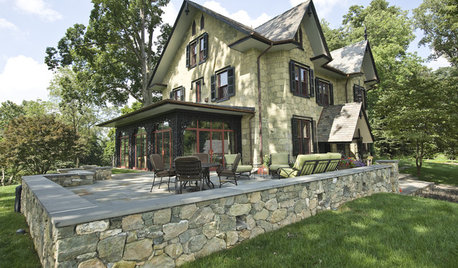Soil STRUCTURE
piedmontnc
14 years ago
Related Stories

GARDENING GUIDESGardening Solutions for Heavy Clay Soils
What’s a gardener to do with soil that’s easily compacted and has poor drainage? Find out here
Full Story
GARDENING GUIDESThe Poop Scoop: Enrich Your Soil With Good Old Manure
Get over the ick factor already — this natural super-ingredient for soil has so many benefits, you'll wonder why you ever went chemical
Full Story
FARM YOUR YARDHow to Get Good Soil for Your Edible Garden
The nutrients in your soil feed the plants that feed you. Here are tips on getting it right — just in time for planting season
Full Story
GARDENING GUIDESHow to Stop Worrying and Start Loving Clay Soil
Clay has many more benefits than you might imagine
Full Story
GARDENING GUIDESGet the Dirt on Your Garden’s Soil
Understand how your soil supports your plants so you can ensure your garden’s success
Full Story
GARDENING GUIDESGardening Solutions for Dry, Sandy Soils
Has your desert or beachy site withered your gardening creativity? Try these ideas for a beautiful, easy-care landscape
Full Story
GARDENING GUIDES10 Solutions for Soggy Soil
If a too-wet garden is raining on your parade, try these water-loving plants and other ideas for handling all of that H2O
Full Story
LANDSCAPE DESIGNFlood-Tolerant Native Trees for Soggy Soil
Swampy sites, floodplains, even standing water ... if you've got a soggy landscape, these trees are for you
Full Story
GARDENING GUIDESHouzz TV: Make a Worm Bin for Rich Soil and Happy Plants
A worm-powered compost bin that can fit under a sink turns food scraps into a powerful amendment for your garden. Here’s how to make one
Full Story
LANDSCAPE DESIGNGarden Walls: Mortared Stone Adds Structure, Style and Permanence
Learn the pros and cons of using wet-laid stone walls in your landscape
Full StorySponsored
Most Skilled Home Improvement Specialists in Franklin County
More Discussions







Lloyd
piedmontncOriginal Author
Related Professionals
Marina Landscape Architects & Landscape Designers · Clermont Landscape Contractors · Westwood Landscape Contractors · Choctaw Landscape Contractors · Cincinnati Landscape Contractors · Essex Landscape Contractors · Fountain Valley Landscape Contractors · Haverhill Landscape Contractors · Hayward Landscape Contractors · Mercedes Landscape Contractors · Petaluma Landscape Contractors · Southbury Landscape Contractors · Hawaiian Gardens Landscape Contractors · Richmond Decks, Patios & Outdoor Enclosures · Riverside Decks, Patios & Outdoor EnclosuresLloyd
piedmontncOriginal Author
spiced_ham
piedmontncOriginal Author
Lloyd
piedmontncOriginal Author
Lloyd
piedmontncOriginal Author
gargwarb
wayne_5 zone 6a Central Indiana
jonhughes
Kimmsr
piedmontncOriginal Author
gardengal48 (PNW Z8/9)
Lloyd
idaho_gardener
gardengal48 (PNW Z8/9)
rhizo_1 (North AL) zone 7
idaho_gardener
gargwarb
gardengal48 (PNW Z8/9)
jonhughes
natschultz
Lloyd
pnbrown
piedmontncOriginal Author
jolj
jonhughes
piedmontncOriginal Author
leira
wayne_5 zone 6a Central Indiana
jolj